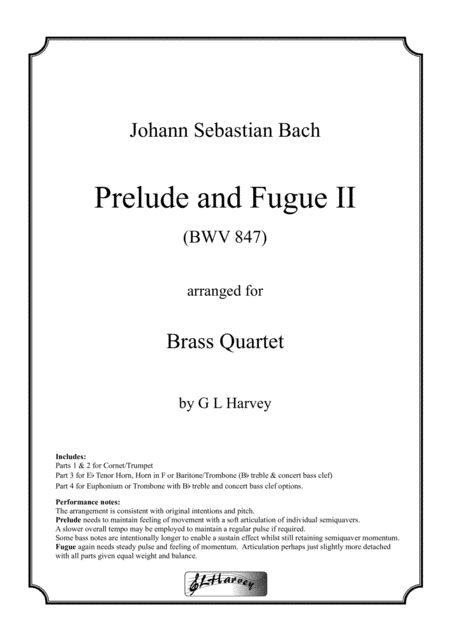Brass Ensemble - Level 4 - Digital Download SKU: A0.805866 Composed by Johann Sebastian Bach. Arranged by G L Harvey. Baroque,Concert,Graduation,Standards,Wedding. Score and parts. 33 pages. G L Harvey #5197823. Published by G L Harvey (A0.805866). This piano classic in C minor, second in the series of J S Bach's 48 Preludes & Fugues, has been arranged for flexible brass quartet. With concerts, recitals and wedding performances in mind, this arrangement will be popular with players and audiences alike. The Prelude has an irrevocable sense of momentum, only sated with a short cadenza like flourish and a final bout of arpeggios. The Fugue allows all four voices to develop and flourish after the forced regimentation of the Prelude. The difficulty level for the Prelude is about ABRSM grade 5-6, and the Fugue about grade 5-8 with the outside parts taking the more technical moments, although optional alternatives are scored where range appropriate to lower difficulty if desired. The PDF is 33 pages in length (portrait A4) and includes a full score and parts for flexible brass quartet (2 Cornets/Trumpets, Tenor Horn/F Horn/Baritone/Trombone and Euphonium/BassTrombone). Bb treble and bass clef parts included as appropriate. The combined duration of the Prelude & Fugue is about 3 minutes 20 seconds.
